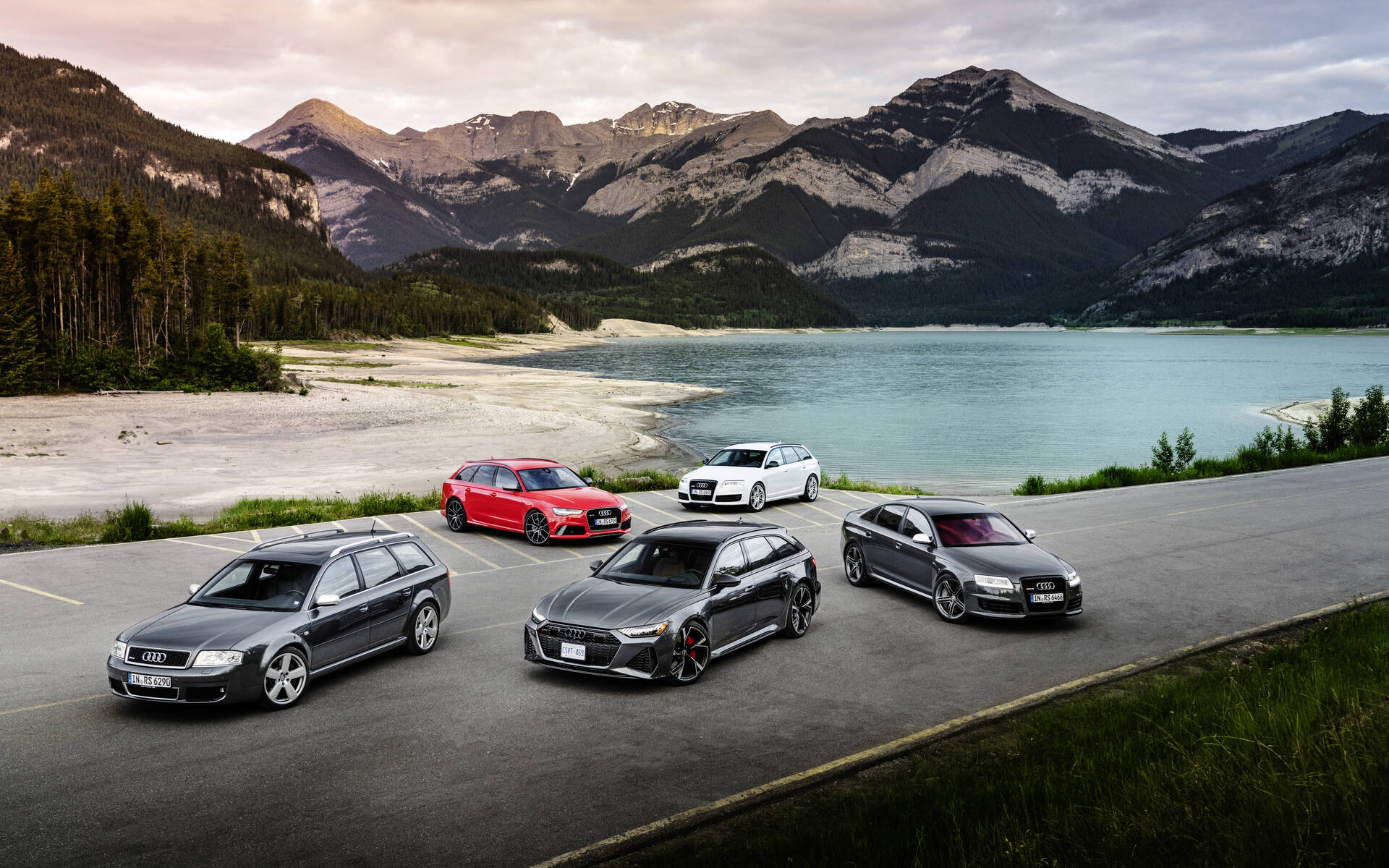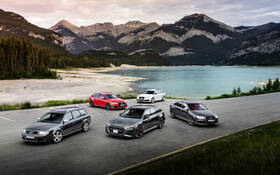Four Generations of Audi RS 6 Celebrate Wicked Wagon’s 20 Years
Originally introduced in 2002, the Audi RS 6 Avant is a success story few people saw coming. Despite being sold in select markets only (North America merely got the first generation in sedan configuration), the wicked wagon has helped the brand make fans all around the globe.
This year marks the 20th anniversary of the RS 6 and Audi invited us to drive the current model along with its predecessors through the beautiful Rockies in Alberta. We obviously couldn’t say no to that.
- Also: Road Tripping in a 2021 Audi RS 6 Avant
- Also: 2021 Audi RS 6 Avant Has a Price to Match its Madness

The four generations are internally known as C5, C6, C7 and C8, the latter acting like a total badass with a 590-horsepower, twin-turbocharged V8 engine under the hood. Ready for a trip down memory lane? Let’s go!
C5 – The Original
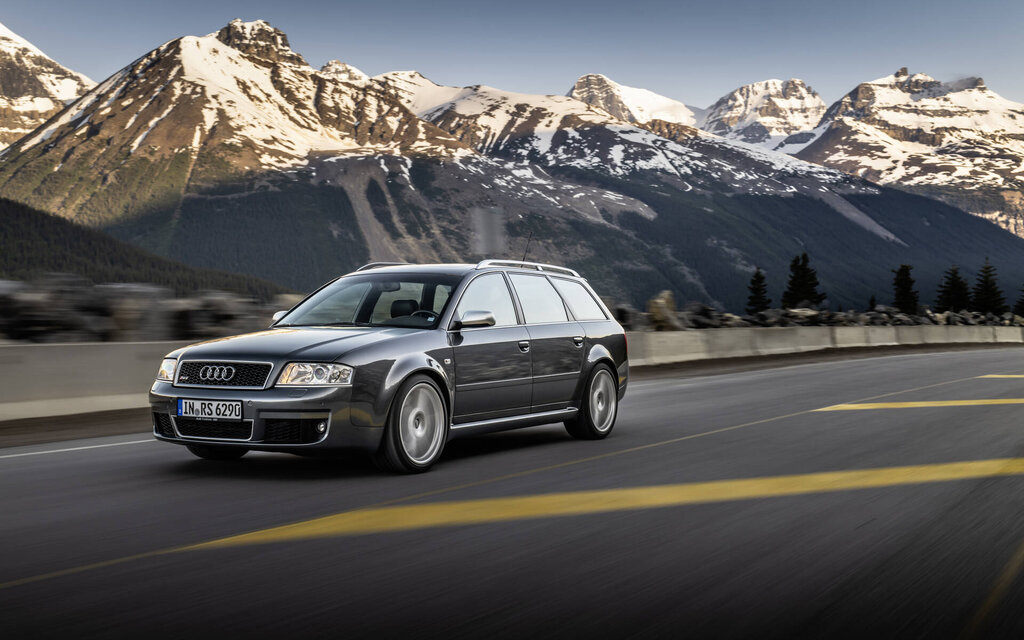
Stephan Reil has long been the head of quattro GmbH, the performance division that today goes by the name of Audi Sport. He happened to be my personal drive partner for this 600-km tour of the Rockies and shared some candid stories about the design and development of the RS 6 over the past two decades.
About the first-generation C5, which featured a twin-turbocharged V8, Reil told me that it was a natural evolution from the smaller and popular RS 4. The original RS 6 was designed to deliver spectacular performance in an understated package—the proverbial wolf in sheep’s clothing.
“When the RS 6 made its global debut at the Geneva Motor Show, German magazine Auto Motor Und Sport wrote that the car had 'unassuming looks and zero presence,' so it appears our plan actually worked,” he said.

All units were made both on the production line and by hand. Driveable, but far from complete. For instance, they lacked the filled suspension, RS-specific components and individual decor elements in the interior. That is why they went from the plant in Neckarsulm to an adjacent hall. There, quattro GmbH technicians finalized each car individually over about 15 hours on the hydraulic lift.
According to Reil, this allowed Audi to manufacture about 20 RS 6 cars a day.
C6 – The V10

The success of the first RS 6 led to many discussions about the second generation. Is too much alcohol the reason why the company chose to go with a new twin-turbo V10 engine?
“No alcohol was involved,” Reil assured me. “We just had bigger balls back then!”
That’s funny. Of course, part of the idea was to show other German competitors what Audi was capable of from a technical standpoint. The 5.0-litre, dry-sump powerplant in the C6 is one of three V10 engines ever offered by Audi along with the naturally aspired 5.2-litre unit found in the S8 sedan and the higher-revving variant that landed in the R8 sports car (not to mention the Lamborghini Gallardo). It generated 80-100 horsepower more than comparable engines from BMW and Mercedes-Benz AMG.
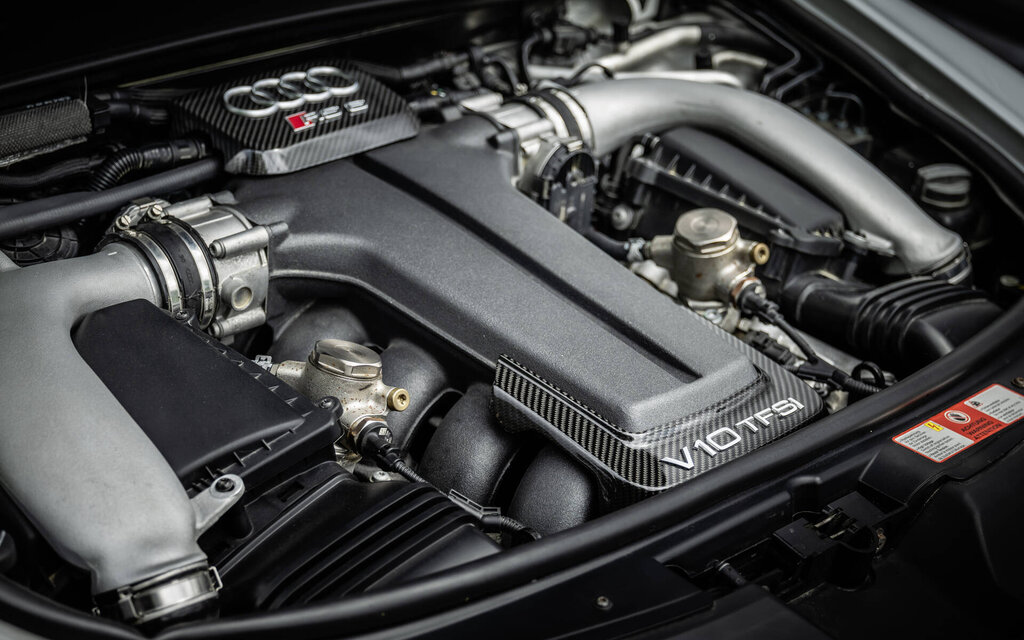
Pop the hood of a second-gen RS 6 and you’ll realize that there’s absolutely no space left. The only spot where you can see the ground below is about as large as a fingernail. Reil joked that you could drop a bucket of water on the engine and not see any leak.
While driving this V10-powered RS 6 on the twisty roads from Banff to Norquay, two things became immediately clear. One, torque is massive, but turbo lag is such that you need to depress the throttle right after turning the steering wheel into a corner if you want said torque to be delivered at around the apex. That’s not something drivers are naturally conditioned to do. Second, handling suffers a lot from the car’s 60/40 weight distribution.
C7 – Back to the V8
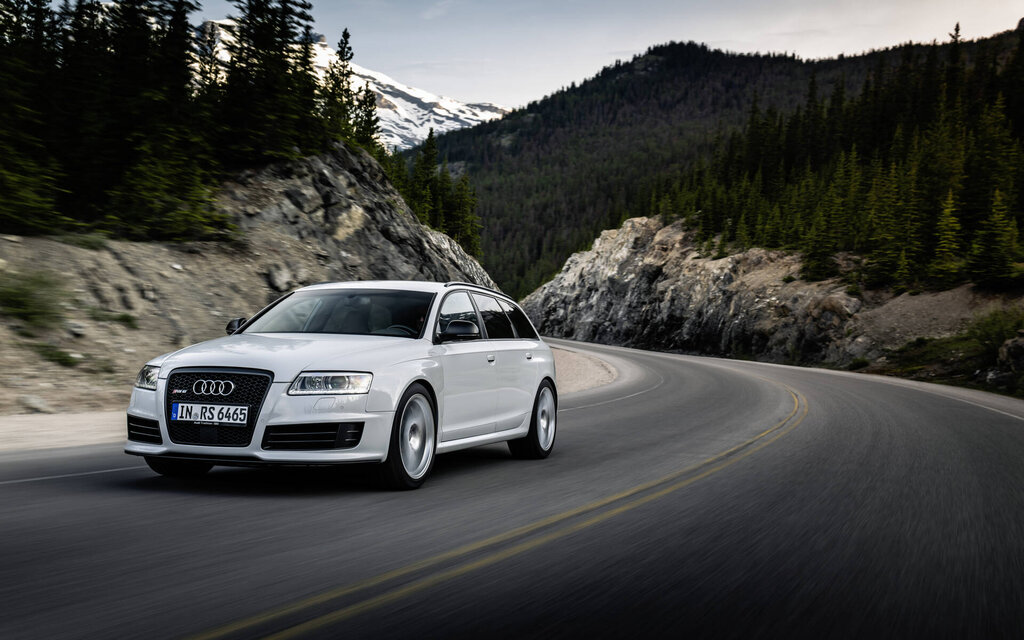
The goal with the third generation of the RS 6 was definitely to improve driving dynamics. Without any surprise, the team went back to using a twin-turbo V8, which was a bit less powerful (-20 hp) but more importantly lighter than the V10.
Reil explained to me that the folks in sales and marketing initially opposed to a weaker engine but he ultimately found a way to persuade them through test drives with a C7 prototype. The car was not only lighter, more balanced and more nimble, but also faster around the track.
“At the end of the day, they came to me and said ‘once again, the engineers are right,’” Reil recalls.
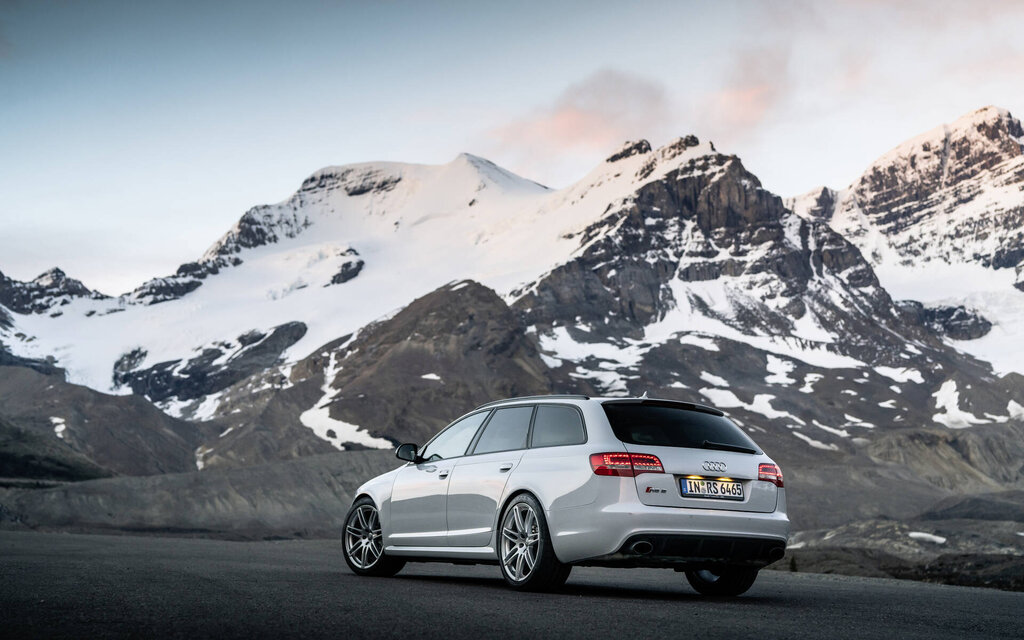
Of all the RS 6 cars I got to drive during this road trip, the C7 is the one that felt the most visceral and proved the most thrilling mainly due to its racier sound than past generations and even the current model.
C8 – The Total Package

Now, having said that, the fourth-generation RS 6 is my clear-cut favourite as it synthesizes the best attributes of its predecessors. The widebody look is a real head-turner, while the addition of all-wheel steering provides remarkable agility given the wagon’s size.
Of course, it also benefits from the latest and most advanced technologies resulting in enhanced, sports car-like performance. Yep, the do-it-all athlete from these 20 years is unquestionably the current RS 6.


